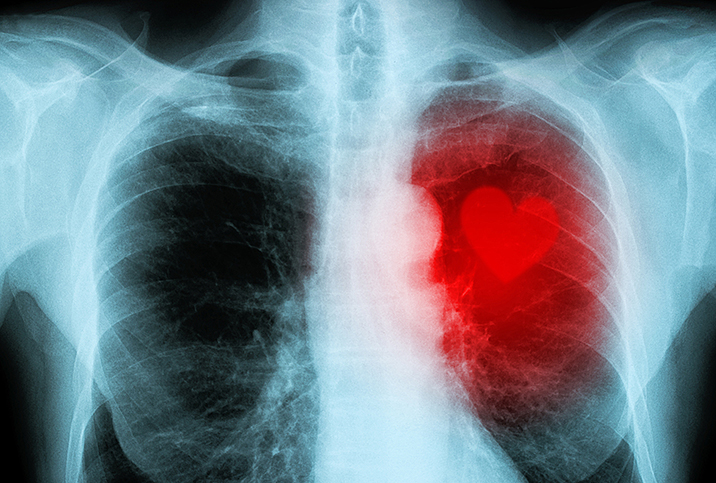Periodontitis: Causes, Symptoms and Link to Heart Health

Periodontitis, or gum disease, is the result of infections and inflammation of the gums and bones that surround and support the teeth. In its early stage, gingivitis, the gums become swollen and red, and may bleed.
"In its more serious form—periodontitis—the gums pull away from the tooth, bone can be lost, and the teeth may loosen or feel shaky," said Lesline Davis, D.D.S., a dental surgeon and public health consultant in Jamaica. "This is as a result of plaque and hardened calculus, which has not been cleaned away, staying at the gum line and in between the teeth. This causes the destruction of the supporting structures of the teeth."
Left untreated, the disease progresses. An abscess can form, or the compromised tooth may fall out. An abscess can also breakthrough or erode the maxillary or mandibular bone and spread into the deep soft tissues of the face and neck. This can sometimes spread into maxillofacial sinuses, but rarely to the brain.
Periodontal disease is most often seen in adults. Signs include bleeding gums, teeth changing position, spaces occurring between the teeth, gums pulling away from the teeth, bad breath and teeth becoming shaky.
How severe gum disease can affect the heart
No direct link has been established between oral health and heart health, but several studies—including one published in November 2020—indicated there was a moderate correlation between periodontal disease and incident coronary heart disease (CHD). Experts posit a few theories.
"The bacteria found in periodontal disease, left untreated, can spread to the bloodstream, which will either clog the arteries or break loose from the arteries, resulting in either a heart attack or stroke," said Barbara Choute, a cardiac nurse with AdventHealth in Florida.
Periodontal disease-related bacteria can enter the bloodstream and cause inflammation to the arteries and other distant organs or systems. Another theory is that the body's immune system reacts to the presence of bacteria with an inflammatory response, causing vascular damage throughout the body, including the heart.
A third factor emerges when analyzing the link between severe gum disease and heart-related complications. Smoking is a risk factor for both conditions, and when taken together with other social determinants of health, such as access to health care, where people live and quality of education, poor outcomes increase exponentially.
Discovering the condition
The biggest risk associated with periodontitis is that the infection can spread to the rest of the body. Delayed or untreated infections can cause an abscess, which can lead to various complications.
You may develop osteomyelitis, an infection of the bone surrounding the tooth; cavernous sinus thrombosis, a blood clot in the sinuses; cellulitis, an infection of the skin and fat directly beneath the skin; or parapharyngeal abscess, an abscess at the back of the mouth.
There is also the possibility of a patient developing sepsis, a potentially life-threatening condition that occurs when the body releases chemicals to fight an infection but instead they cause inflammation and damage to organs.
The signs of an infection that has spread include a painful tongue and mouth, swelling of the face, neck and cheeks, itching or burning sensation on the skin, nausea, vomiting, fever, severe headache, double vision or loss of vision, drooping eyelids, difficulty breathing and confusion.
A severe tooth infection that spreads to other parts of the body is always classified as a medical emergency.
Preventive measures and treatments
Periodontitis can lead to severe complications, but progression to this level is totally preventable.
"See your dentist or dental hygienist for a professional dental cleaning every six months," Davis advised. "At those visits, your gums are checked and X-rays may be taken to assess whether you have gum disease.
"Pay meticulous attention to your oral hygiene," she added. "Brush with a soft toothbrush for approximately three minutes using circular motions. Ensure that you brush each surface of your teeth and that you brush right up to your gums when brushing. Flossing also helps prevent gum disease by removing plaque and food particles between the teeth. The recommendation is to floss at least once a day."
Davis emphasized that smoking doubles the risk of gum disease.
As with every oral health condition, see a board-certified dentist for an evaluation to diagnose and prescribe treatment of your symptoms.


















